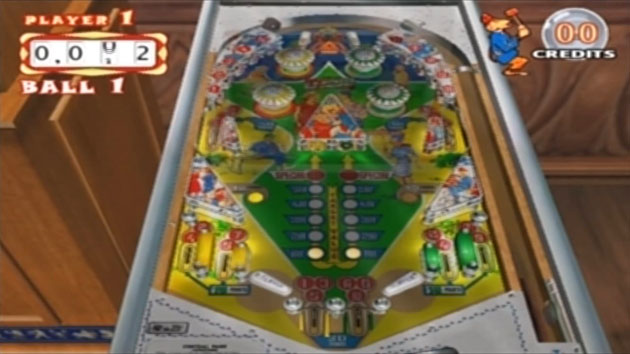Pinball Hall of Fame: The Gottlieb Collection Doesn’t Hold Up to Real Pinball
There is a wonderful bar down the street from my apartment that houses dozens of pinball machines from the last five decades, and it has completely reignited my love for this incredibly awesome form of entertainment.
It might be the history; pinball dates back to the 1930s and has an absolutely fascinating lineage. It might be the game’s tangible nature; everything is played in the real world with real-world physics. Slightly bumping the machine will result in a equal reaction by the game’s tiny steel ball. Perhaps it’s the artwork; each machine is completely unique in its style and illustrations. Let’s face it, the hand-drawn illustrations of the early electromechanical pinball machines are simply some of the best in pop-culture history.
More likely, my love for pinball likely stems from an amalgam of all of the things I’ve mentioned; each element of pinball is essential in creating the exhilarating and frantic experience that fueled its popularity for much of the 20th century.
I often find myself gravitating towards the more simplistic, electromechanical machines of the 1960s and 70s. It’s probably similar to why guitarists prefer vintage tube amplifiers. There’s something fascinatingly raw about machines that were built on pure engineering prowess, without the use of solid-state electronics.
In my opinion, nobody did pinball physics better than Gottlieb. Pinball Hall of Fame: The Gottlieb Collection for the Nintendo GameCube features seven classic machines from Gottlieb’s decades-long catalog, beginning with 1957’s Ace High and ending with 1993’s Tee’d Off.
Each machine is lovingly replicated from it’s real-life counterpart. Everything from the backglass to the playfield is faithful to the bulking masses of steel electronics found in arcades. The various chimes and pops from the bumpers sounds just as they should, effectively creating as realistic an arcade atmosphere as pragmatically possible.
Unfortunately, that’s where the similarities to the arcade end. To be fair, digitally duplicating the pinball experience is a near impossible task. Anyone who has spent an appreciable time on a table can attest to the fact there there simply is no recreating the feel of that actual pinball machine within a video game.
Still, there are some games that come astonishingly close. Pinball Hall of Fame: The Gottlieb Collection just isn’t one of them. I attribute a considerable amount of this to the GameCube’s elevated trigger buttons. This adds just enough flipper lag to make hitting shots an exercise in complete frustration, so all you’re left to do is keep the ball alive and hope something good happens. Sadly, there is no option to customize the controls to a more responsive setting.
Something also doesn’t feel right about the ball physics. An actual pinball has considerable amount of weight to it, but the balls in this game bounce around like weightless ping pong balls. The illusion of pinball is there, but the subpar gameplay mechanics do absolutely nothing to uphold your suspension of disbelief.
There are a few redeeming qualities for hardcore pinball geeks like myself, however. Each of the seven machines comes with an extremely comprehensive tutorial on how the game’s scoring system works. This is one advantage I feel video pinball has, especially with how complex playfields became after solid-state electronics were introduced. There’s also a short narrated history for each table, as well as a high-resolution scan of its promotional flyer.
The game also features some neat unlockables, including a playable version of 1932’s flipper-less “Play-Boy” and a photo tour of the old Gottlieb factory. Ever wondered what the Gottlieb lunch room looked like? Well, here’s your chance to find out.
I was considerably underwhelmed when I booted up this game for the first time. Each of these seven tables is certainly deserving of being included in a game touting the title Pinball Hall of Fame, but the execution falls flat. Considering how cheaply the game can be acquired, however, I still recommend it for pinball fans; if only for the table artwork and tutorials. If you’re looking for a more authentic pinball experience, I’d highly recommend The Pinball Arcade instead, which is available on just about every modern platform out there.
My ultimate recommendation, however, is to track down the nearest pinball machine, grab a roll of quarters, and spend a few hours playing the real thing.



